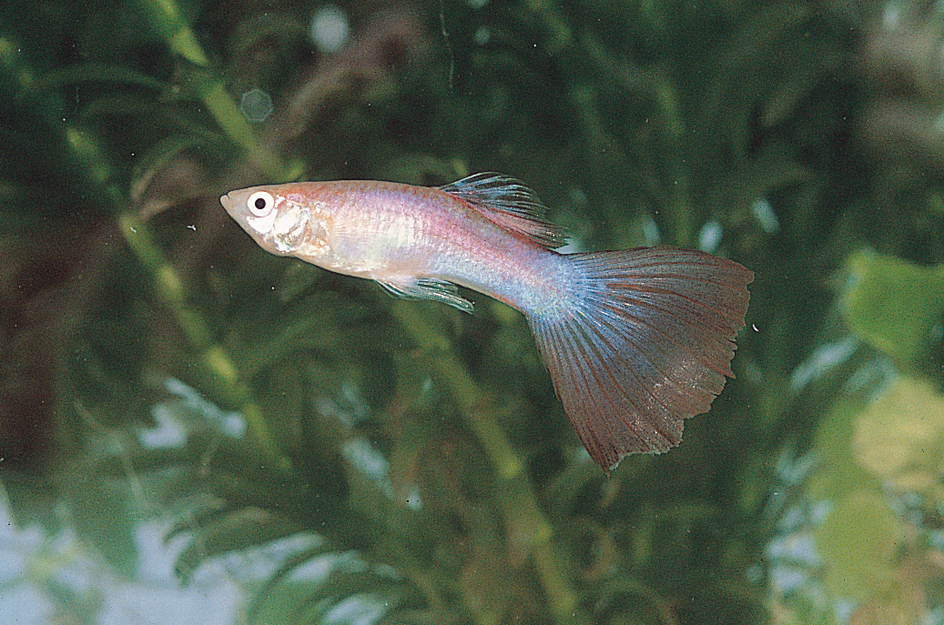Guppy is a small tropical fish that rivals the goldfish as the world’s most popular aquarium pet. Guppies have beautiful, featherlike tails and fins. Many male guppies have several bright colors in a pattern on their body, and they often look like small jewels. Adult males are about 1 inch (2.5 centimeters) long. Female guppies grow about twice as long and are mostly gray.

Guppies are native to the warm, freshwater streams of Venezuela and adjacent Caribbean islands. In their natural habitat, they feed mainly on such small animals as worms, shellfish, and insect larvae (young). Groups of these fish have been released in many lakes and ponds throughout the world to control mosquitoes.
Guppies are closely related to swordtails, mollies, and mosquito fish. All these fishes are called live-bearers because they give birth to live, fully formed young. Most other fishes reproduce by laying eggs. Guppies reproduce as frequently as every four to six weeks. The male guppy uses a special fin on its underside to place semen (fertilizing fluid) inside the female. The female produces from 30 to 50 young at a time. Newborn guppies are so tiny that they are barely visible. They measure only about 1/8 inch (3 millimeters) long.
A hardy fish, guppies are an excellent choice for a beginner’s home aquarium. They can be kept in fishbowls or other small containers. Guppies can survive in water at a temperature as low as 55 °F (13 °C), but the temperature should be at least 68 °F (20 °C). Adult guppies sometimes feed on young guppies. For this reason, baby guppies should be separated from the larger fish until they grow big enough to live among them safely.
Guppies are named after R. J. L. Guppy, a British scientist who worked in Trinidad. He introduced the fish to aquariums in England during the 1800’s.
